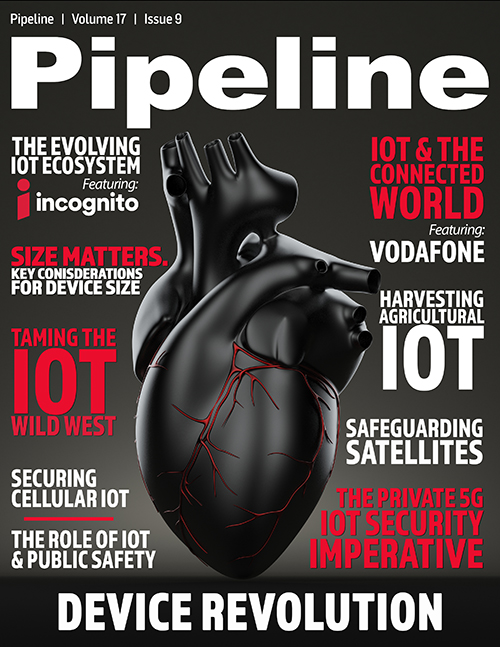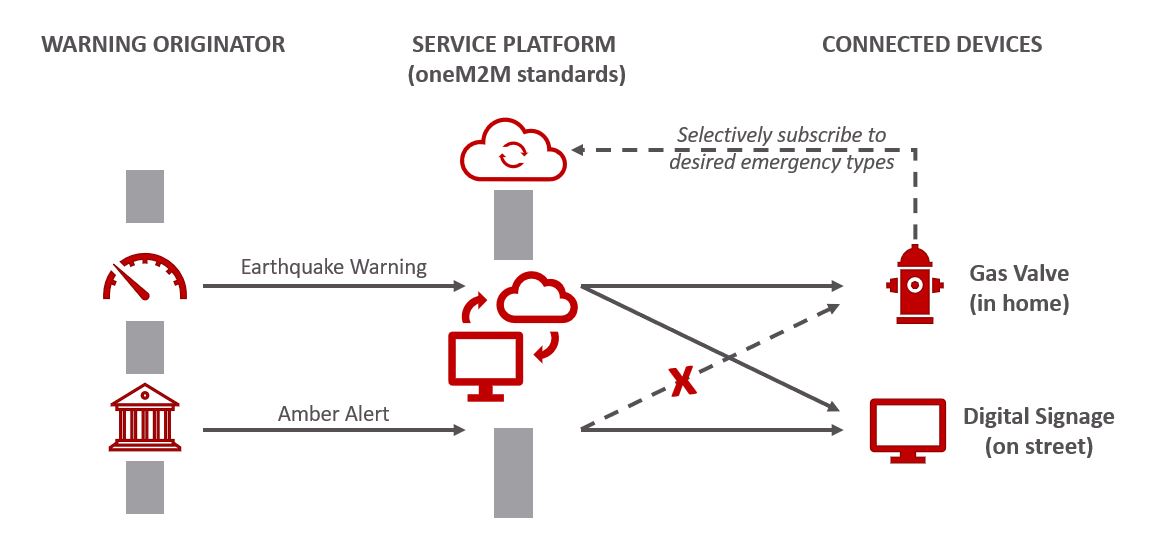Advancing Public Safety with IoT Interoperability
oneM2M and public safety in Asia-Pacific
Drawing on experiences in Korea and Japan, representatives from the Korea Electronics Technology Institute (KETI) launched a oneM2M standardization work item on public warning service enablers. This involved adding support for a public warning information model that contains event types for various severities of emergency situations.
The standardization effort is expected to lead to new subscription and notification features. A connected device could subscribe to emergency notification messages from different sources, based on emergency events of interest (see Figure 1, below). In the example shown in the graphic, the gas valve can selectively subscribe to receive notifications for earthquake warnings only. However, a public warning sign can subscribe to receive notifications for both earthquake warnings and AMBER alerts. Adherence to oneM2M standards allows different participants in such a system to design and deploy components that interoperate and share data, even as additional warning originators and connected devices are added over time.
Figure 1: Connected devices and notifications
click to enlarge
Enhancements for emergency communications
The oneM2M architecture and its services are distributed in nature. They can be deployed quickly at the site of an emergency, hosted on a local device such as an emergency services vehicle. This local deployment can communicate with other devices at the scene and communicate back to the command center.
oneM2M supports access control mechanisms to ensure access to devices and data is only granted to authorized entities (such as police, fire, and rescue teams) based on profile information. oneM2M’s Communications Management tool supports prioritization and store-and-forward handling of messages. This means that system operators can specify policies so that lower-priority messages are buffered and scheduled around higher-priority messages while dealing with congestion issues on the underlying communications networks.
oneM2M’s Group Management specification enables communications for groups of devices and individuals such as emergency responders (for example, the formation, disbandment and fanout of messages to groups). The Location tool provides the capability to monitor and track the locations of individuals, via clothing equipped with sensors for instance, as well as devices and report when they enter or exit a particular area.The Subscription and Notification tool supports the capability for applications to subscribe to events of interest. This may be based on specified criteria and push notifications if and when these events occur (as in, “let me know when the power to a particular house has been restored”). It also ensures that applications are not overwhelmed with data and only react to trigger events that are relevant to their public service or emergency function.




















